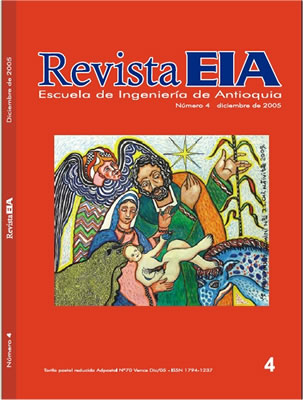LOS SISTEMAS DE INFORMACIÓN GEOGRÁFICA (SIG) EN LA PLANIFICACIÓN MUNICIPAL
LOS SISTEMAS DE INFORMACIÓN GEOGRÁFICA (SIG) EN LA PLANIFICACIÓN MUNICIPAL


This work is licensed under a Creative Commons Attribution-NonCommercial-NoDerivatives 4.0 International License.
Copyright statement
The authors exclusively assign to the Universidad EIA, with the power to assign to third parties, all the exploitation rights that derive from the works that are accepted for publication in the Revista EIA, as well as in any product derived from it and, in in particular, those of reproduction, distribution, public communication (including interactive making available) and transformation (including adaptation, modification and, where appropriate, translation), for all types of exploitation (by way of example and not limitation : in paper, electronic, online, computer or audiovisual format, as well as in any other format, even for promotional or advertising purposes and / or for the production of derivative products), for a worldwide territorial scope and for the entire duration of the rights provided for in the current published text of the Intellectual Property Law. This assignment will be made by the authors without the right to any type of remuneration or compensation.
Consequently, the author may not publish or disseminate the works that are selected for publication in the Revista EIA, neither totally nor partially, nor authorize their publication to third parties, without the prior express authorization, requested and granted in writing, from the Univeridad EIA.
Show authors biography
En el presente trabajo se revisan las experiencias con la tecnología de Sistemas de Información Geográfica (SIG) que han tenido diferentes municipios y entidades estatales del Oriente Antioqueño y el Valle de Aburrá, identificando las condiciones que han favorecido y dificultado su apropiación como herramienta cotidiana. Se muestran las bondades de la tecnología desde una perspectiva sencilla, al alcance de casi cualquier municipio. Con base en las experiencias de los municipios que desde hace ya algunos años entraron en el proceso de apropiación de esta herramienta, se muestra cómo la información que se recopila a diario puede ser fácilmente organizada, analizada y visualizada para la toma de decisiones de planificación con ayuda de la herramienta, partiendo de lo simple para ir robusteciendo el sistema en la medida en que se adquiere experiencia y familiaridad con ella. Se presentan los programas y funciones de uso más frecuente en Colombia y se describe la problemática de la disponibilidad de datos confiables de entrada y el flujo de información entre la autoridad local, regional y nacional que intervienen en el ordenamiento territorial, condición que se considera clave para dar coherencia a los procesos de planificación.
Abstract: A review of the experiences with GIS technology that different municipalities and governmental institutions in the Oriente Antioqueño and Valle de Aburrá regions have had is presented here, identifying conditions that have made its appropriation in a daily basis easier or more difficult. The advantages of GIS technology are shown here from a simple perspective, achievable practically by any municipality or governmental institution. Based on the experiences of municipalities that for several years have been in the process of using this tool, it is shown how general data that are daily obtained can be easily organized, analyzed, and visualized for decision making in planning helped by GIS technology, starting from simple systems, and making them stronger as experience and familiarity with the technology is gained. The most used GIS software and functions in Colombia are presented, as well as a description of the problem of reliable data availability and interaction between governmental institutions, since this is considered a chief condition for consistent planning.
Article visits 374 | PDF visits 226
